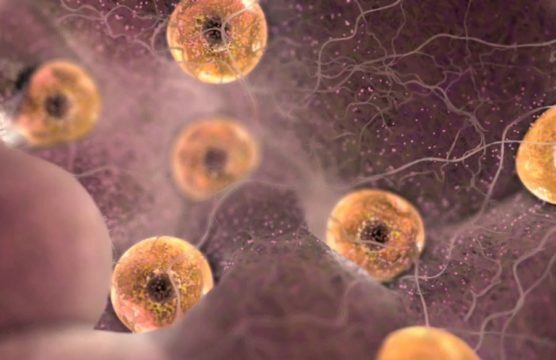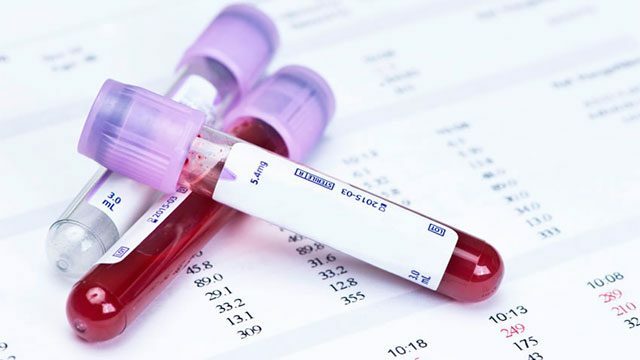Ovaries form an integral part of female genital organs. They are responsible for the production of hormones, the functionality of the reproductive system. Diseases or abnormalities in the function of the ovaries can lead to the loss of a woman's genital function. In particular, one of the violations observed on ultrasound is the small-follicular structure of the ovary.

Description of the disease
The small-follicular structure of the ovary implies that the follicle is larger than it should be in the norm, and they have small dimensions - less than they should be. Normally, they should be 7. As a rule, the symptomatology of this condition is not expressed clearly or not expressed at all. The problem is found during ultrasound in finding out the reason why a woman can not become pregnant.
In general, the disease is not a sentence and a serious impediment to pregnancy. On the other hand, sometimes this condition may precede polycystosis and hormonal imbalance.
Normal follicle
This tissue site is responsible for the maturation of a healthy egg. For the onset of ovulation requires a certain size of the follicle, in which the egg can freely leave it. For this the work of the endocrine glands is responsible.
The size of the follicle is determined by ovulation. Since they are formed seven, one of them reaches the leading sizes among all the others - it is also called dominant. The initial size of the follicle can be up to six millimeters, by the day of ovulation it reaches 2.5 cm.
If all the formed follicles remain in the initial sizes formed at the beginning of the cycle, or do not reach a sufficient size for the exit of the egg, a diagnosis of small follicular ovaries is made. Too small follicles can not ensure normal movement of the egg.

Causes of
The small-follicular structure of the ovaries can be diagnosed by a doctor based on ultrasound. Such a condition does not threaten serious impairment for fertilization, but it is only after the cause of pathological changes is identified and eliminated that it is possible to talk about a successful pregnancy.
Common causes for small-focal ovaries:
- Genetic disorders;
- Prolonged intake of hormonal contraceptives for preventing pregnancy;
- Increased concentration of prolactin, which is observed in the period of feeding the child;
- Sharp weight loss or one of the clinical stages of obesity;
- Severe stress, depression;
- Disorders of the endocrine system;
- The pubertal period;
- Observed in women about forty years due to hormonal changes in the body.
Often the cause is a genetic predisposition, because of which melkofollikulyarnost observed in the mother and her adult daughter. But the influence has other factors listed.
Symptoms of
Symptoms of this disease are not very vivid and can be confused with other symptoms of quite common phenomena. In the early stages, in the first place, there is a violation in the systematic nature of the menstrual cycle. Delays begin, or a faster onset of menstruation. This is possible for many other reasons, therefore it is not necessary to sin right away into small-follicularity.

In addition to this main symptom, the following are observed:
- Voice tone reduction;
- Drawing dull pain in the pelvic region;
- Increased hairiness in males;
- A sharp increase in the fat content of the scalp;
- Acne rash;
- Acne;
- Constant weight gain.
These symptoms accompany most endocrine diseases, therefore require immediate consultation with both the gynecologist and the endocrinologist.
Diagnostics
Ovulation is closely related to melkofolikulyarnostyu, because in the absence of ovulation requires an ultrasound. Self-diagnosis of the lack of ovulation is difficult. It is easier for women who conducted a basal temperature schedule and used ovulatory tests for a long time to find out the most successful days for conception.
ultrasound is performed several times to reliably describe the picture of follicular maturation from the beginning of the cycle to the end. Three studies are usually sufficient. The first is on the second-third day of the cycle to determine the onset of maturation, the second - on the 13-15th day for the study on the onset of ovulation, and for the third week of the cycle to determine the remaining follicles and their number.
If the doctor observes an excessive number of follicles of the same size for the second and third examinations, and a dominant follicle is not observed for the period of ovulation, suspicion of small follicularity is raised.
Studies of
In addition to the standard diagnostic procedure, additional hormonal blood tests may be required, especially if the physician suspects multifollicularity. Blood tests to be performed include analysis of:
- Follicle-stimulating hormone;
- Insulin;
- Thyroxine;
- Testosterone;
- Cortisol;
- Triiodothyronine;
- Thyrotropin;
- Luteinizing hormone.

These tests should appoint an endocrinologist, and their result will help to identify a violation in the work of one of the glands responsible for the development of the dominant follicle and the release of the egg.
Pregnancy
Many women are terribly afraid of the diagnosis and believe that it is on the path to successful conception. In fact, this is a mistaken opinion and the chance to get pregnant is quite high. If endocrine diseases are not found, and melkofollikuljarnost has arisen because of genetic predisposition or reception of hormonal contraceptives, chances to become pregnant are high enough.
In this case, the gynecologist examines the timing and mode of taking contraceptives and adjusts the treatment in such a way as not to strike a blow to the hormonal background. With a genetic predisposition, it is necessary to study the ovaries during pregnancy planning.
If polycystosis develops against the background of small-follicularity, then treatment of this disease is required beforehand. It is characterized by the fact that the tissues thicken and interfere with the release of the egg. Early treatment allows you to get rid of the disease, albeit not forever, but get pregnant and endure a healthy child.
Methods of treatment
With the confirmation of the diagnosis, self-contained and superficial treatment is strictly prohibited, as it can significantly exacerbate the situation. Often, treatment includes a set of activities.
This complex includes treatment with carefully selected oral contraceptive, however controversial. The fact is that a contraceptive, correctly selected, can reduce the concentration of a hormone that prevents the formation of a dominant follicle.

In addition, moderate physical activity and a special diet are prescribed for successful treatment. It should contain healthy food, with a minimal amount of additives, flavors, dyes and substitutes.
In addition, the ovulation stimulation is aimed at activating the ovaries and secreting the dominant follicle. If all conservative methods of treatment do not work, the question of surgical intervention is being considered.
In this case, after the operation, it is required to wait for the rehabilitation period with a thorough examination of the ovaries condition, and then to plan a successful and healthy pregnancy.
Consequences of
As a rule, a reasonably constructed tactic of treatment allows to achieve results within half a year and to plan a successful pregnancy. Even in the treatment of an operative method, after rehabilitation, a woman is able to become pregnant and bear a child.
After the operation, it takes time to wait for the hormonal background to stabilize and at least two or three cycles have passed, in which the function of the ovaries will recover and the dominant follicle will be released.
Folk treatment is best used only under the guidance of a doctor, as excessive hormonal treatment without agreement can completely deprive a woman of childbearing function. The main beacon of women's health is menstruation. In case of any violations of it, you need to consult a doctor as soon as possible.



